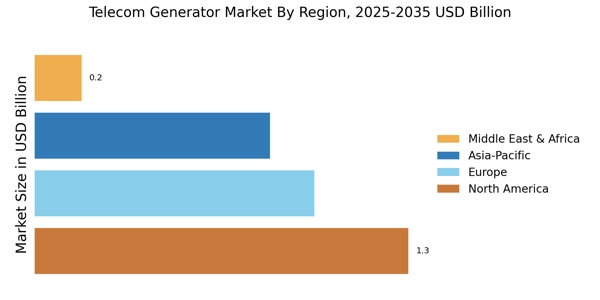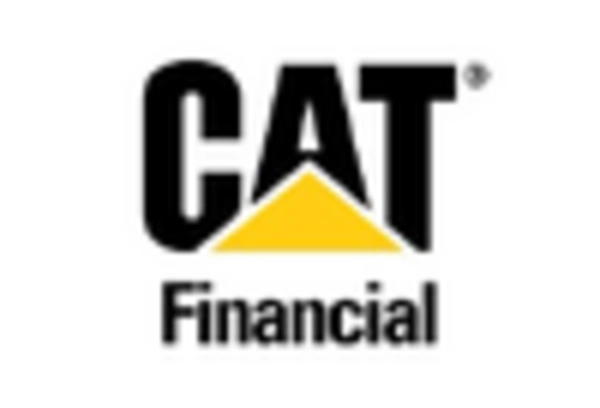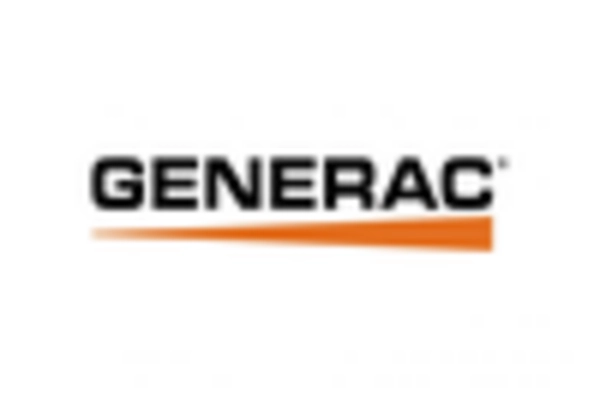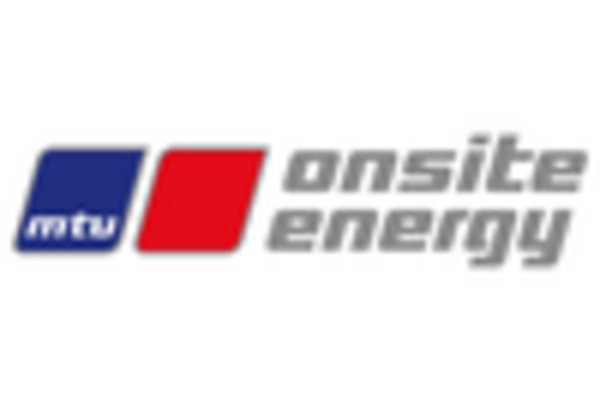Integration of Smart Technologies
The integration of smart technologies into the Telecom Generator Market is transforming how generators operate and are managed. Advanced monitoring systems and IoT connectivity allow for real-time data analysis, enabling operators to optimize performance and predict maintenance needs. This technological evolution not only enhances operational efficiency but also reduces downtime, which is crucial for telecom operators. As of 2025, it is estimated that smart generators could account for over 30% of the market share, driven by the increasing adoption of automation in telecommunications. This trend suggests that the Telecom Generator Market is moving towards more intelligent solutions that can adapt to varying energy demands and improve overall service reliability.
Emergence of Hybrid Power Solutions
The emergence of hybrid power solutions is reshaping the Telecom Generator Market. These systems, which combine traditional generators with renewable energy sources such as solar or wind, offer a more sustainable and cost-effective approach to power generation. As telecom operators seek to reduce operational costs and enhance energy efficiency, hybrid solutions are becoming increasingly attractive. By 2025, it is projected that hybrid systems could capture a market share of around 20%, driven by their ability to provide reliable power while minimizing environmental impact. This trend suggests that the Telecom Generator Market is evolving towards more integrated and sustainable energy solutions, catering to the needs of modern telecommunications.
Increasing Demand for Reliable Power Supply
The Telecom Generator Market experiences a notable surge in demand for reliable power supply solutions. As telecommunications infrastructure expands, the need for uninterrupted power becomes paramount. This demand is driven by the increasing reliance on mobile networks and data centers, which require consistent energy to maintain operations. In 2025, the market for telecom generators is projected to reach a valuation of approximately USD 5 billion, reflecting a compound annual growth rate of around 6%. This growth is indicative of the industry's response to the critical need for backup power solutions, ensuring that communication networks remain operational during power outages or fluctuations. Consequently, the Telecom Generator Market is likely to witness innovations aimed at enhancing generator reliability and efficiency.
Focus on Sustainability and Environmental Compliance
The Telecom Generator Market is witnessing a growing emphasis on sustainability and environmental compliance. As regulatory frameworks tighten around emissions and environmental impact, telecom operators are increasingly seeking eco-friendly generator solutions. This shift is prompting manufacturers to develop generators that utilize cleaner fuels and incorporate energy-efficient technologies. By 2025, it is anticipated that the market for green telecom generators will grow by approximately 15%, reflecting the industry's commitment to reducing its carbon footprint. This trend indicates that the Telecom Generator Market is aligning itself with broader environmental goals, potentially leading to new product offerings that meet stringent regulatory standards.
Rising Investments in Telecommunications Infrastructure
The Telecom Generator Market is significantly influenced by rising investments in telecommunications infrastructure. Governments and private entities are increasingly allocating funds to enhance connectivity, particularly in underserved regions. This investment trend is expected to bolster the demand for telecom generators, as new installations require reliable power sources. In 2025, the global telecommunications infrastructure investment is projected to exceed USD 300 billion, which will likely drive the growth of the telecom generator segment. As a result, the Telecom Generator Market is poised to benefit from this influx of capital, leading to increased production and innovation in generator technology.


















Leave a Comment